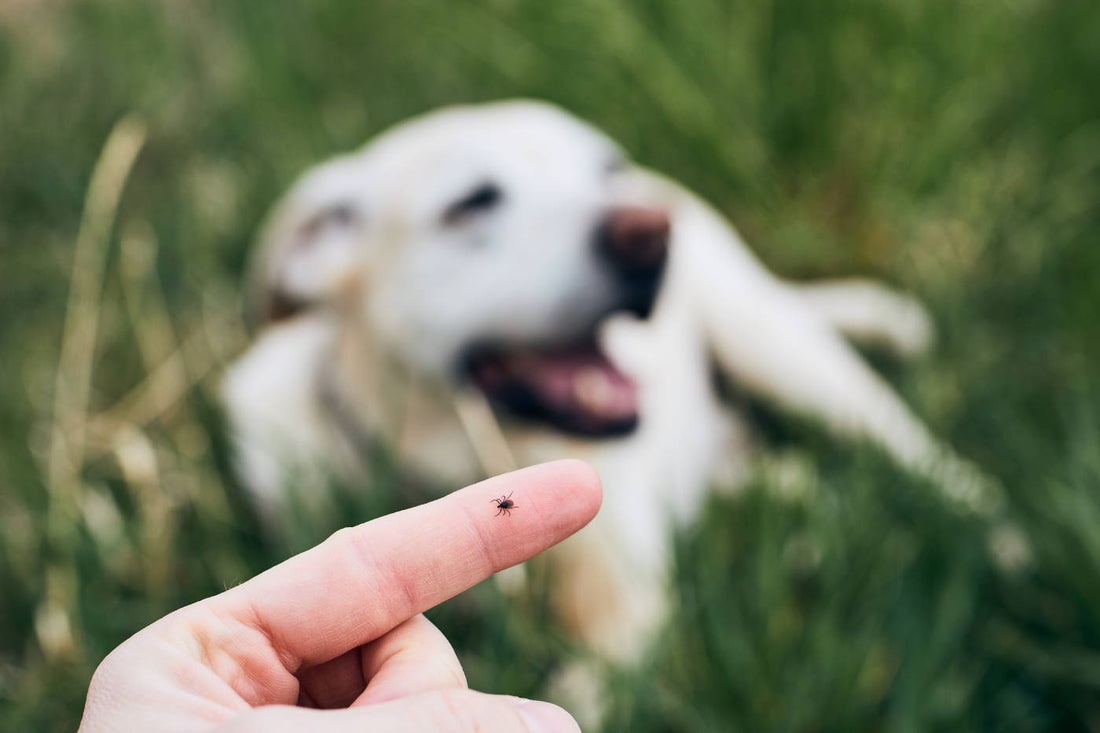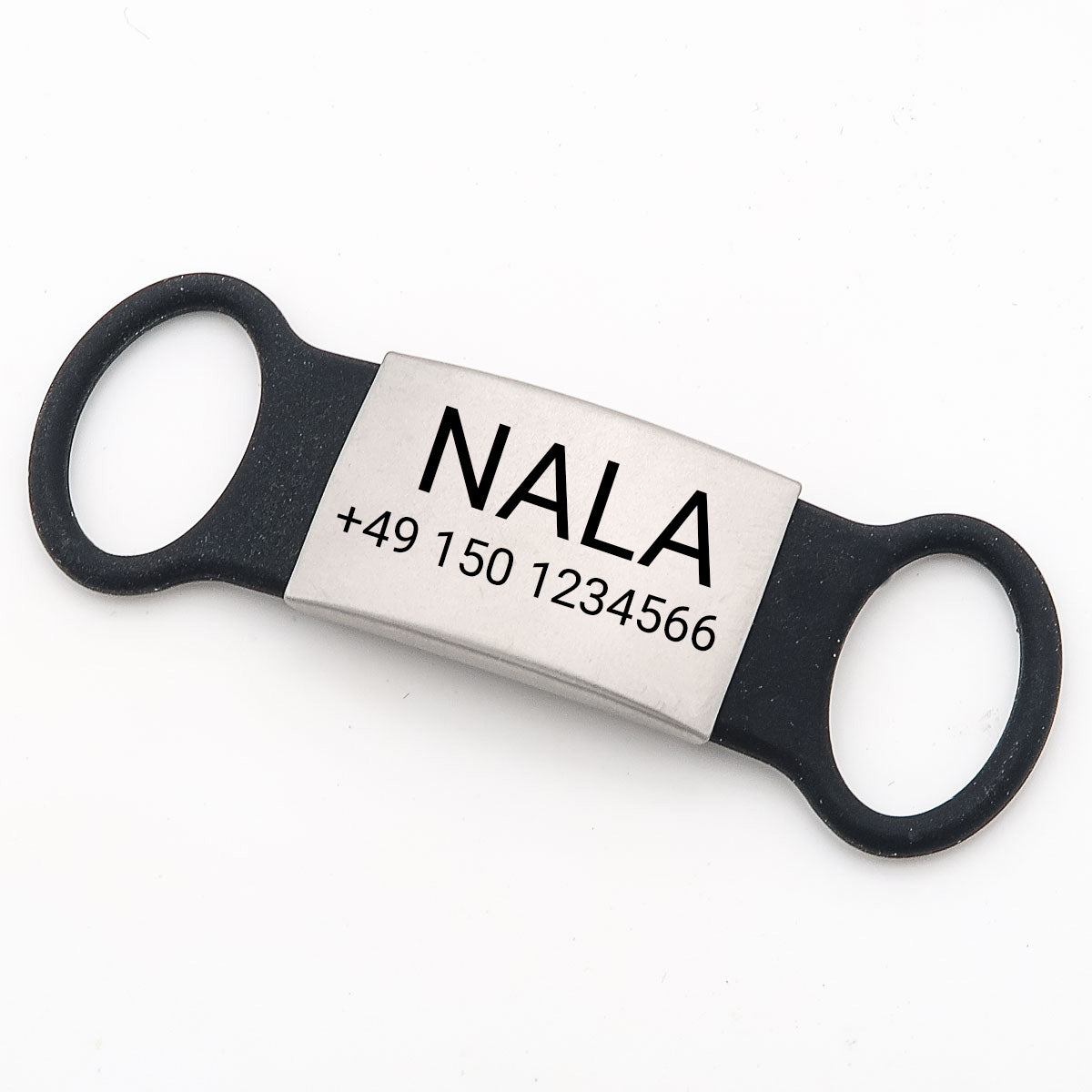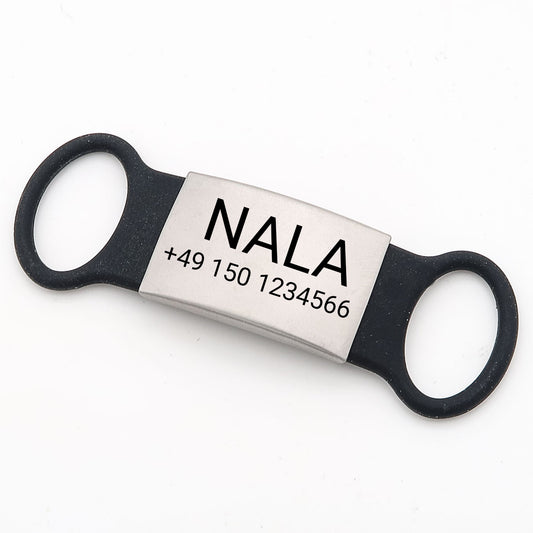
Beware of the arachnids: Important information for the prevention of tick bites in dogs
Share
Ticks are one of the most common parasites that infest dogs. They can transmit disease and, if not treated carefully, can cause serious health problems. It's important for dog owners to be aware of the risks and how to take preventative measures to avoid tick bites in their dogs.
1. introduction
Before we get into how to prevent tick bites on dogs, we would like to give you a brief introduction to the topic. Ticks are arachnids and belong to the mite family. They are spread all over the world and can be found in different habitats, such as meadows, forests or even in your own garden. Ticks feed on blood and can transmit various diseases to the host. Particularly well known is Lyme disease, which can cause fever, lethargy and joint pain in dogs. Therefore, it is all the more important to learn about the prevention of tick bites in dogs and to take appropriate measures.
2. the dangers of tick bite in dogs
Tick bites in dogs are not only unpleasant, but can also cause serious health problems. The danger is that ticks can transmit diseases such as Lyme disease and anaplasmosis, which can lead to serious health problems. Dogs that live in areas with a high incidence of ticks or spend a lot of time outdoors are at higher risk. It is important to regularly check your dog's body for ticks and remove them immediately. There are also several preventative measures such as wearing tick collars or using anti-tick sprays. Timely treatment can help prevent serious health problems and allow your dog to live a happy and healthy life.
3. how can we prevent ticks in dogs?
To prevent tick bites in dogs, there are some measures dog owners can take. One of the most important measures is to check the dog regularly for tick infestation. Especially after walks in the woods or tall grass, owners should carefully scan their dog and remove any ticks. Additionally, a special tick collar or tick repellent can be applied to reduce the risk of tick bites. Vaccination against certain tick-borne diseases may also be appropriate in consultation with a veterinarian. By taking these preventative measures, owners can help protect their dog from the dangers of ticks and enjoy carefree walks in nature.
4. how to recognize a tick bite on a dog?
To detect a tick bite on a dog, it is important to regularly scan the animal's coat for any changes. Ticks prefer warm and moist places on the dog's body, such as the ears, belly or between the toes. A tick bite usually shows up as a small red spot or swelling and may be accompanied by itching. However, it is not always easy to recognize a tick bite, as the parasites often bite into deeper layers of the skin and are not immediately visible. Therefore, it is important to also observe the dog's behavior. If he scratches himself more or seems restless, this could be a sign of a tick bite. It is therefore advisable to regularly check the coat thoroughly and visit the vet in case of suspicion.
5. how to treat a tick bite in a dog?
A tick bite on a dog is not only unpleasant, but can also transmit dangerous diseases. Therefore, it is important to treat the bite as soon as possible. First, the tick should be removed with tweezers or special tick forceps. Care should be taken to remove the head of the tick completely to avoid inflammation. After that, the wound can be disinfected and an ointment can be applied to help the healing process. If the dog shows symptoms such as fever or lethargy, it should be presented to a veterinarian immediately, as these may be signs of infection. To prevent tick bites in dogs, they should be treated regularly with a suitable anti-tick agent and thoroughly searched after walks in the countryside.
6. what preventive measures should we take to ensure the protection of our dogs from ticks?
To ensure the protection of our dogs from ticks, there are some preventive measures we can take. One way is to regularly check the coat for tick infestation. Here, special attention should be paid to areas where the coat is denser and longer, such as the ears or neck area. There are also special tick nippers or combs that can be used to remove a tick quickly and effectively. To prevent an infestation from the outset, various spot-on preparations or collars can also be used. These contain active ingredients designed to repel or kill ticks. Environmental control can also be helpful: Here, grassy areas should be mowed regularly and piles of leaves removed, as ticks like to stay in moist environments. These simple measures can improve the protection of our dogs from ticks.
7. conclusion
In conclusion, tick bites on dogs are not only unpleasant, but can also transmit dangerous diseases. Therefore, regular control of the coat and prophylactic treatment with special agents are essential. Avoiding areas with a high occurrence of ticks and wearing protective clothing can also help to minimize the risk. However, if a tick bite does occur, quick action is important. Remove the tick as soon as possible and watch your pet for signs of illness. If in doubt, always consult a veterinarian. With these tips, you can protect your dog from ticks in the best possible way and help him live a healthy and happy life.
Image credit: Chalabala, Adobe Stock





